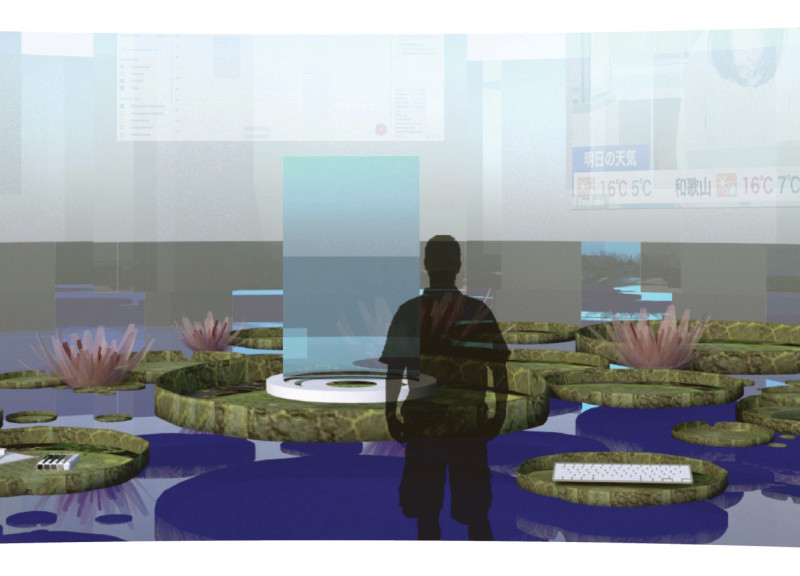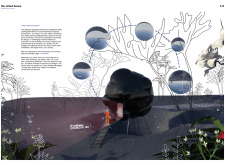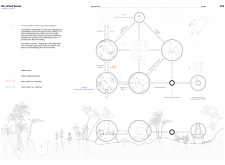5 key facts about this project
The Virtual House reimagines residential living through the lens of augmented reality. It introduces a spherical design that represents both flexibility and adaptability in how spaces can be organized. By prioritizing user autonomy, it creates an environment where individuals shape their experiences and engage with various activities. Reflecting modern lifestyle needs, the approach distinguishes itself from traditional residential designs.
Spatial Organization
The layout of The Virtual House departs from conventional structures by removing corridors and rigid spatial separations. Instead, the design employs a navigation system that helps users move easily throughout the space. This layout empowers individuals to decide how they want to interact with their surroundings, whether for work, leisure, or hosting gatherings. Each area serves multiple functions, promoting efficiency in day-to-day life.
Privacy and Security
With privacy being a critical concern in today's digital world, the design includes walls that act as firewalls, integrating architectural features with necessary security measures. This dual function enhances the user's protection while maintaining a sense of openness within the space. By addressing modern cybersecurity challenges, the design emphasizes the importance of safety in an evolving digital environment.
Aesthetic Considerations
The visual style draws inspiration from early digital aesthetics. This connection creates an environment that feels both familiar and modern. It is designed to encourage interaction while providing comfort and a sense of belonging. The balance between technological elements and basic human needs reflects current living experiences, making the space relatable to its users.
Functional Spaces
Different areas within The Virtual House highlight the integration of technology into everyday tasks. Designated spaces for creative workshops, cooking classes, and data archiving show how digital interactions can blend seamlessly into daily routines. Each area supports specific activities while contributing to the overall flexibility of the design, allowing users to shift between various experiences as they wish.
The design showcases a thoughtful relationship between digital and physical elements, resulting in a space where users can find refuge and adapt their virtual environments to suit their needs and preferences.





















































